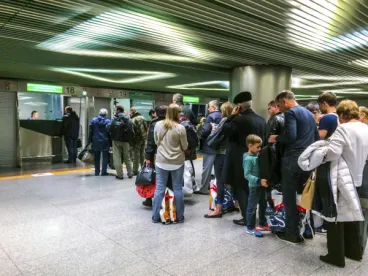The North American Free Trade Agreement (NAFTA) signed in 1992 was meant to make North America more competitive in the global economy by reducing trade barriers and increasing business development among the U.S., Canada and Mexico. It essentially created a free-trade zone, but always faced criticism. Opponents believed and have argued, among other things, that the agreement actually harmed U.S. workers.
In 2018, President Donald Trump renegotiated NAFTA in part to lower the trade deficit between Mexico and the U.S. In September 2018, the U.S., Mexico and Canada agreed to sign onto the new “NAFTA” which would be known as the USMCA, the United States Mexico Canada Agreement.
Throughout the history of NAFTA/USMCA, special status was accorded to Canadian workers. Because Canadians do not need visa stamps in their passports to enter the U.S., they were able to apply for L visa classification at ports of entry. There was no need to go to a consulate nor file a petition with USCIS. But that benefit is now being limited. After twenty years of adjudicating renewals of L status at ports of entry, CBP is refusing to adjudicate anything other than an initial L petition or applications for intermittent/commuter Ls at the border.
This means that employers who want to “renew” or “extend” L status for Canadians must apply to USCIS. Not only does this extend the adjudication process but it also means that L applicants will not have an in-person opportunity to explain their circumstances to officers who are very familiar with the process. While this does not seem in accord with the ideals behind NAFTA and USMCA, it is consistent with President Trump’s Buy America, Hire America Executive Order (BAHA). With BAHA, the Administration seeks to protect U.S. workers by making it more difficult for foreign nationals to obtain work authorization in the U.S. and, the thinking goes, take jobs that would be filled by those workers.
The Request for Evidence (RFE) and denial rate for temporary visas has grown exponentially and adjudication timelines have created long delays. The USCIS denial rate for L-1B petitions in the first quarter of FY 2018 was approximately 30% and the denial rate for L-1A petitions rose 67% during FY 2017 to 21.4%, far higher than has been generally experienced at the ports of entry.




 />i
/>i
